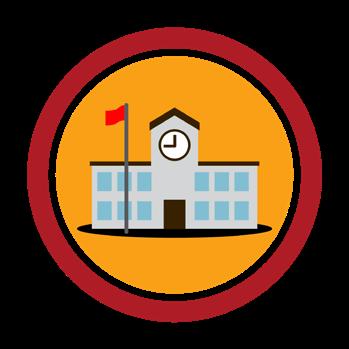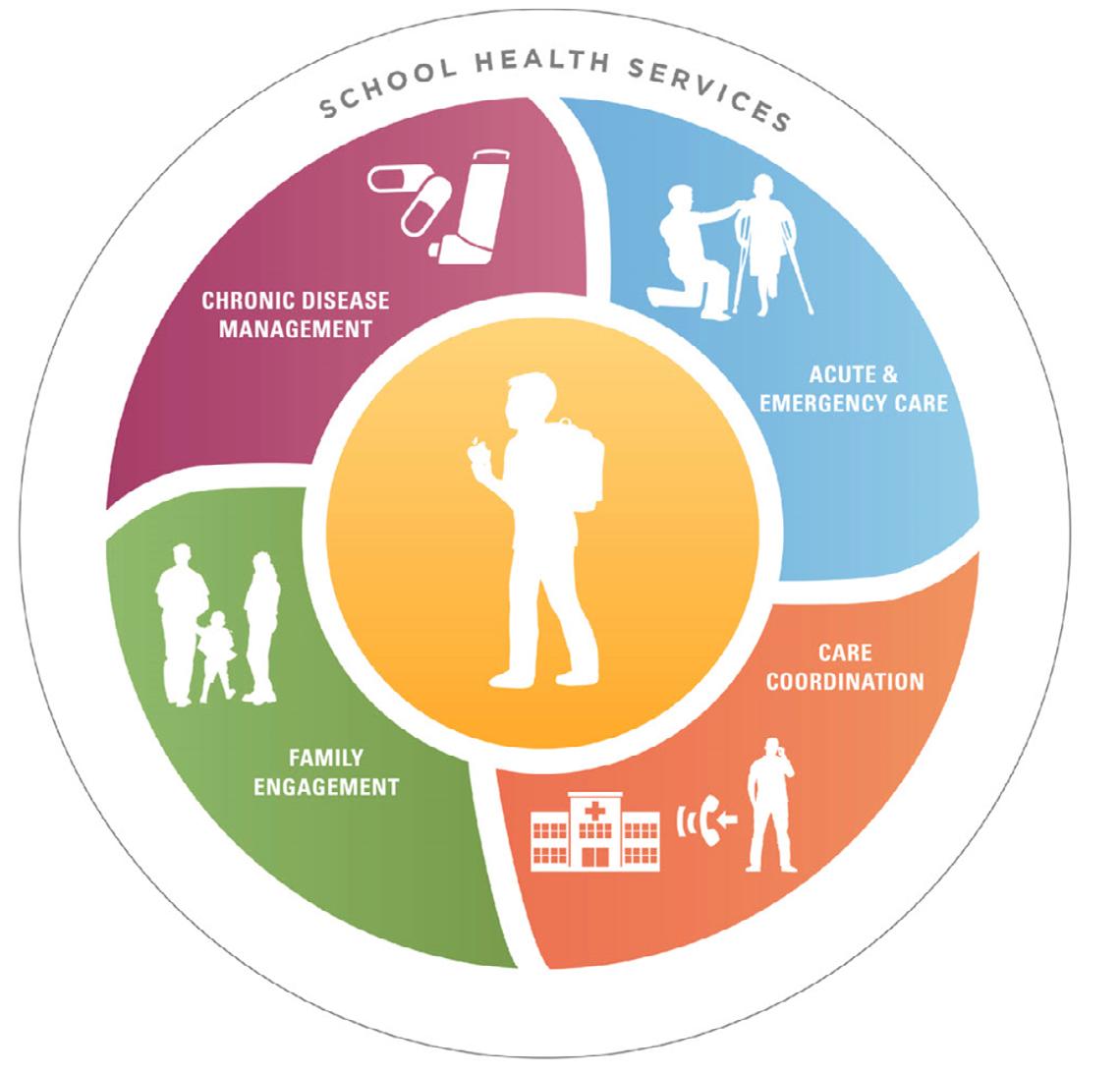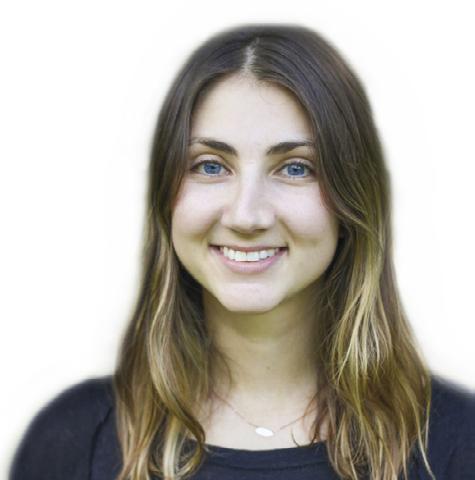A Compendium of Student Work


UNIVERSITY OF MICHIGAN EXPERIMENTAL SEMINAR: ARCH 509/409
TAUBMAN COLLEGE OF ARCHITECTURE + URBAN PLANNING
Fall 2022

2
HealthByDesign Compendium
The world is in crisis today. It has more than ever before- and more to lose as well. At the core of this crisis is our health as a planet, as people, and as a society. This course is set up to explore systemic issues of health and address them along the design continuumfrom information, to product, to place, to policy, while being anchored on the environments we live in, and the human minds & behaviors that shape them. It is practice-based and focused on making real, actionable, meaningful change. This semester it zeroes in on primary care, and the role of clinics and communities in enhancing health and wellbeing, within a healthcare system that is under extreme stress today. Through this course you will join (and shape) a growing HealthBYDesign Community.
This course is founded on the belief that design makes a difference. We will learn how to link design intent to health outcomes and explore what it means to truly improve health and wellbeing. What are the measures? Are they meaningful? Do they matter? We will learn about evidence-based design and evidence-challenging design. We will learn about core areas like public health, clinical outcomes, safety, technology, and human perception- and then seek to bridge this insight, across disciplines, towards the foundation of any health delivery system- Primary Care. Guest speakers will join most of these classes, held in the evening to better include professionals- from private companies, health systems, and nonprofit agencies. Each session will have a catalyst presentation, an interdisciplinary conversation, and a point of view generation. The outcome of the course will be an open-source web publication on the healthbydesign website with a proposed design intervention/ innovation that is actionable, bridges disciplines, and addresses the design continuum. We encourage students from various disciplines to take this course - so we can have a rich dialogue and an actionable outcome.
IntroductionUniversity of Michigan Experimental Seminar Arch 509/409 Taubman College of Architecture + Urban Planning, Professor Dr. Upali Nanda
Fall 2022 Compendium
Final Edit Compilation By Natalie DeLiso Website: healthbydesign.cargo.site
Dr. Upali Nanda
3 Fall 2022
December 2022
Acknowledgment
Reviewers
Teresa Keenan
Director, Consumer Insights, Health and Health Security at AARP
Maya Fraser
President of I.D.E.A.S., Inc., and Chair of the Board of the IDEAS Institute
Craig Kolstad, AIA, ASID, NOMA, LFA, LEED AP, WEDG, LSSYB Principal & Design Lead at ROSSETTI
Andrea Marquez
Project Coordinator at Communities First, Inc.
Dr. Deborah Wingler, PhD, MSD-HHE, EDAC Associate Director of Research, Principal at HKS
Daniela Aguirre Alfaro Design Researcher at CADRE
Tamie Glass
Associate Professor, Author of Prompt: Socially Engaging Objects and Environments
Alison Avendt, MBA
Chief Operating Officer at McLaren St. Luke’s
Guest Speakers
Meredith Banasiak, M.Arch, EDAC, Assoc. AIA Senior Associate - Director Of Research at Boulder Associates. Advisory Board Member for the Academy of Neuroscience for Architecture (ANFA)
Dr. Joy Knoblauch Director of the Architecture Doctoral Program, Associate Professor of Architecture at Taubman College of Architecture and Urban Planning
Dr. Deborah Wingler, PhD, MSD-HHE, EDAC Associate Director of Research, Principal at HKS
Mitch Mead, LEED AP, WELL AP, EDAC Management Director at Impact Design Collaborative
Maya Fraser, M.Arch Candidate at Taubman College at University of Michigan
Guest Speakers
Camilla Morretti HKS, AIA, LSSGB, LEED AP BD+C
Studio Practice Leader, Heath, Principal at HKS
Julia (DeGripp) Calabrese, ASID Global Design Manager of Workplace and Retail at Ford Motor Company
Phi Ho, Associate Director, Practice Lead | Technology Systems Architect at IBI Group
Dr. Joyce Lee, MD, MPH Associate Chief Medical Information Officer for Pediatric Research at Michigan Medicine
HealthByDesign Compendium 4
Content
Introduction Acknowledgment Point of Decision Design Projects Class of 2022 Bios
Chair, Clinic, and the Classroom Heal as you Wait Health Connect Provider’s Plug Putting First Responders First Stay in Touch Taubman Let’s Get Healthy
5 Fall 2022 04 06 22 03

6
HealthByDesign Compendium
CarebyDesign
How can we create environments for primary care that address the needs of patients, families, and caregivers, for physical and mental health?
Fall 2022 Class Students focused on ways primary care can happen beyond clinic walls. Students have been tasked with removing their assumptions and encouraged to explore ways care can be provided throughout the design continuum, both in digital and physical realms. Through this process, students are understanding how to use their skills as designers to identify opportunities and propose solutions that are research-driven, people-centered, and rooted in a systems view of health. The intent is for the breadth of work to create a supportive health network, where proposals strengthen one-another and further support health outcomes.
7 Fall 2022
Why
Chair, Clinic, and the
Classroom Rethinking
Care from a Student’s First Point of Contact
The school nurse’s office is the first place where many students feeling ill go to receive medical attention. Instead of this place being a middleman in the step to seeing a real doctor, what if our primary care health system was rooted within schools? Care from the first point of contact can aid in the timely diagnoses of patients, help lower the spread of illnesses, and shorten recovery times.

Primary care clinics can be a child’s worst nightmare. We seek to remove the fear and necessity of visiting the doctor’s office by making access to care more convenient and comfortable.
How
We are bringing care to children directly at their school by boosting the capabilities of current nurse’s offices, making them somewhere students can feel safe, looked after, and comfortable while being diagnosed.
What
An at-school clinic that possesses the ability to diagnose students and provide care at the first point of contact through the use of a welcoming and comfortable check-in-chair environment.
So What
Create a more efficient and engaging check-in experience that creates more accurate vital tracking and a more pleasurable waiting experience. Care is achieved from the first point of contact at a location one goes to every day
In our nation access to care is an important issue. Statistics show “as many as 25% of Americans do not have a primary care provider.” In addition, “In 2020, 4.3 million children under the age of 19 — 5.6% of all children — were without health coverage for the entire calendar year.” The importance of universal access to care as well as having a established primary care doctor can not be understated. Primary care physicians serve as the first point of care, keep detailed medical records, monitor and treat chronic health conditions over time, as well as provide referrals if you need advanced care from a specialist. Through the help of C-cubed, we aim to solve all issues of accessibility to care as schools are the most frequented establishment in a child’s day-to-day life and abundant in every community.
C-cubed would carry a full staff of knowledgeable physicians, integrated check-in chairs with diagnostic capabilities, and comprehensive exam/ consultation spaces. Every child within the school community would have not only convenient access to care, but also consistent access to care throughout their adolescent years.
Ultimately through the help of C-cubed, we aim to skip the steps of patients “Reaching out”, “Making an appointment”, and “Visit” by going immediately from “Feeling sick” to “Diagnostic” and “Check out”.
HealthByDesign Compendium 8
PLACE ARCHITECTURE INFORMATION POLICY PRODUCT POLICY URBAN REALM PRODUCT INTERIOR
Team Members: Blaise Gimber Andrew Hoover




9 Fall 2022
HEALTH NEEDS PRE-HEALTH NEEDS FEELING SICK REACHING OUT MAKING AN APPT VISIT DIAGNOSTIC CHECK-OUT FOLLOW-UP
School Nurse
Tommy Boy
Team Members:
Dureti Ahmed
Devin Chaldecott Dua Duran Prakriti Vasudeva
Redefining the point of entry:
Heal as you wait
We will bridge the gap between patients and providers with the app, helping hand. We believe the platform, which provides resources about scheduling and positive distractions such as healing spaces can help reduce patient anxiety significantly.

Why
The waiting space upon entry produces feelings of anxiety, uncertainty, and is always unproductive. These suffocating environments do not cater to the health and well being of patients and users who are looking for personalized care. From wasted waiting that creates feelings of stress, anxiety and uncertainty to time that promotes healing and readiness.
How
Both physical and digital interventions will offer opportunities for new points of influence throughout an individuals community.
What
Our idea focuses on improving existing conditions and redefining waiting room experiences by personalizing and introducing positive distractions both in the physicalanddigitalenvironmentthatcaters to patient personalities and promotes healing within their point of entry.
So What
Our reimagined waiting experience would enhance patient experience by providing healing spaces & personalized waiting experiences.
For our healing spaces, we took inspiration from both Disney and the Singapore airport. We found that both places have had great success with utilizing positive distractions for people waiting in lines. Disney does this by playing videos for people waiting in lines. Whereas Singapore has implemented healing spaces using nature to make the waiting process more enjoyable and relaxing. Both initiatives take mental and physical wellbeing of customers into account, which is what we wanted to incorporate in our reimagined waiting experience.
Our proposal is to reuse the existing physical ‘waiting’ rooms and turn them into spaces for actual healing. The ‘healing spaces’ can have multiple “X-Programs” in different physical primary care settings, in contrast with the existing primary care model where ‘waiting’ was the main function.
Examples of X-programs introduced within our healing space include reading corners in a library, indoor gardens, access to healthy snacks, provisions of spaces for exercising, and informal meeting areas for community gathering.
We believe that by introducing personalized healing environments right from the beginning, patients will feel less intimidation, nurture productive states of mind, and experience calm waiting overall. In our therapeutic spaces that cater and support patient mental and physical well being, patients will have more comfort entering healthcare spaces both physically and virtually.
HealthByDesign Compendium 10 PLACE ARCHITECTURE INFORMATION POLICY PRODUCT POLICY URBAN REALM PRODUCT INTERIOR




11 Fall 2022 HEALTH NEEDS PRE-HEALTH NEEDS FEELING SICK REACHING OUT MAKING AN APPT VISIT DIAGNOSTIC CHECK-OUT FOLLOW-UP Digital Interface
Team Members: Nehal Jain Nina Lang Angana Syamroy Natalie DeLiso
Health Connect: Creating an Equitable Community Health Ecosystem
Our aim is to create hyper-localized disruptions within a community’s existing social determinants of health for better health outcomes. Scalable physical interventions in the built environment will range from new buildings to a bus stop kiosk, supported by a digital ecosystem.
Why
The medical community is increasingly incorporating a set of principles Social Determinants of Health into assessments of patient health. These facets of an individual’s health are unequally distributed and may even be underutilized even within densely populated healthcare networks.
How
Both physical and digital interventions will offer opportunities for new points of influence throughout an individuals community. These touch points will be localizedtoauserandcommunityneeds.
What
Three different types of physical interventions will offer new clinic locations and programs to encourage healthy behaviors. An app will support the user experience in navigating their community and encourage social connection and healthy decision making.
So What
By creating an expanded network of opportunities for connection and health services, underutilized areas in under served communities will be transformed to create better health outcomes.
Health Connect originated from the concept of “Social Determinants of Health” to create equitable health ecosystems within communities. We see Social Determinant-based solutions as a way to move communities from underutilized space and disconnected community health services to engaged and connected ecosystems for equitable health access.
The project will provide increased access to resources, with an emphasis on empowering each individual in the community to take an active role in making healthier choices. By establishing a hub of services designed to meet the current and future needs of the community, this initiative will create positive, lasting change in the health outcomes of underserved populations.
Proposed physical interventions are scalable across contexts and infrastructure needs. Our different intervention scales are meant to increase access to healthcare services based on community need and to make use of underutilized public spaces for community health. The extent of our interventions respond directly to the needs and existing health infrastructure within a particular community. Interventions include transforming existing waitings spaces, mobile clinics, and construction of new clinics sited in a location with high local utilization.
The digital element of our healthcare ecosystem is WebWell by Health Connect. This mobile app supports our physical interventions and promotes healthy and connected lifestyles for its users. Elements of the app address its three guiding principles: health behaviors, social connection, and environmental health.

HealthByDesign Compendium 12
INFORMATION POLICY PRODUCT POLICY URBAN REALM PRODUCT INTERIOR PLACE
ARCHITECTURE






13 Fall 2022 Digital Interface Mobile Clinic Existing Waiting Space New Clinic at Existing Use HEALTH NEEDS PRE-HEALTH NEEDS FEELING SICK REACHING OUT MAKING AN APPT VISIT DIAGNOSTIC CHECK-OUT FOLLOW-UP
Team Members: Elaine (Siyuan) Cheng Cassidy Kohl Natalie Brown
Why
Providers
to Refreshed
Plug: Burnt-out
The emotionally exhausted clinician is overwhelmed by work to the point of feeling fatigued, unable to face the demands of the job, and unable to engage with others.
How
Through product and interior design, staff wellbeing can be improved. Clinics can enhance connecting spaces with pause points and wellness nooks, or by rethinking staff areas and unused spaces to include nooks or sensory features.
What
Pause points are positioned within the corridors of a clinic and unused areas. New delight design additions can be costly but strategically finding these areas within an existing clinic can reduce initial costs. The nook gives autonomy to providers at work.
So What
Studies have proven that stress relief, relaxation and exercise can be effective in alleviating burnout among healthcare professionals, thereby improving patient satisfaction and quality of care.
From feeling exhausted and burnt-out to feeling refreshed and engaged the creation of “pause points” and “nooks” in the primary care scene will allow for nurses and other healthcare providers to destress and relax to prevent the causes of burnout.

PLACE
Providers Plug is a new way for healthcare workers to destress and take the time to recharge. Over the past couple of years the healthcare system has been one of the most challenging institutions to navigate. A major contributor to this situation is the unprecedented shortage of medical staff as cases increase, which has resulted in many medical staff having to work overtime causing fatigue and burnout.
Our design is inspired by this situation and hopes to alleviate the stress of healthcare providers in their daily work through small, hospital-based interventions and provide them with a variety of alternative, restful physical and virtual spaces to improve their physical and mental health and productivity.
Designing a series of “pause points” will take the form of “nooks” designed to provide healthcare providers with a short break in their work. Using different sensory experiences will give each “nook” a different character, providing a multi-dimensional relaxation and experience for the staff.
Our digital footprint will be a wellness kiosk that provides different apps that can help optimize the efficiency of medical visits and reduce the workload of healthcare professionals.
HealthByDesign Compendium 14
ARCHITECTURE INFORMATION POLICY PRODUCT POLICY URBAN REALM INFORMATION INTERIOR


15 Fall 2022
Team Members: Aaron Comstock Ann Borek
Putting First Responders First: Traveling Clinic for First Responders
FirstRespondersandMedical-FieldWorkersarefacingextremelydifficultandstressful circumstances at work. Their jobs and training often force them to put their health needs aside for others. Our mobile clinic uses an app to highlight appointment requests by both employees and employers on a heat map. A mobile home being utilized as a mobile clinic/pop-up clinic then travels to these essential workers at their job to offer them an outside source of healthcare and accessible primary care that puts their own needs on the forefront of their lives.
Why
Across the globe, especially after the Covid-19 pandemic, first responders and medical-field workers are suffering. These heroes endured extensive pressure from their jobs with little to no increased benefit. They have experienced unprecedented amounts of stress from increased patient loads, to lack of fellow employees, to the mental trauma that comes with being on the front-line during a pandemic.
How
In order to care for essential workers, we are proposing a mobile clinic, housed in a traveling bus, as well as in popup events that inhabit places around the community. This will allow essential workers to be met with care at their workplace, without hindering their job.
What
In order to accomplish this goal we’ve looked at two non-traditional health care systemsthatutilizeconvenience,mobility, and event based community building.
So What
The mobile clinic with pop-up events for first responders and medical-field workers will have a vital impact on the patients who utilize it.
In order to put first responders first, we are proposing to create a mobile clinic. This will entail two physical footprints, the first being a traveling vehicle, the second being larger scale pop-up clinics set up in the first responders’ work places.
This service will travel to first responders’ in the community. In order to know which individual or area are in need of service, there will be a mobile app/website. The app will allow first responders’ to request individual appointments. If an individual appointment it requested the mobile vehicle will come to the individual’s workplace and provide physical and mental health care for that individual.

On the app the mobile physicians will be able to see the proximity of all of the appointment’s requested through a “heat map”, and provide the most convenient and time efficient care.
In addition to requested appointments, the mobile clinic will drive throughout the community and perform drop-in appointment to workplaces that may need them.
The last component of the mobile clinic will be larger pop-up events hosted throughout the community. These events will be scheduled in advance and advertised in order to create a sense of community around the health of first responders, helping to bolster their mental and physical health.
HealthByDesign Compendium 16 PLACE ARCHITECTURE INFORMATION
PRODUCT
INFORMATION PRODUCT
POLICY
URBAN REALM
INTERIOR
Heat Map Digital Interface


17 Fall 2022
NEEDS PRE-HEALTH NEEDS FEELING SICK
MAKING
APPT VISIT DIAGNOSTIC CHECK-OUT FOLLOW-UP
HEALTH
REACHING OUT
AN
Mobile Clinic
Team Members
Chan Lok Yan Katie Bailey Priya Sam
Stay in Touch
Improving the doctor-patient relationship through
Improving trust between the doctor and the patients by informal checkups and social interaction throughout the year, as well as customizing theexamroomexperienceaccordingtopatients’preferences,ultimately building a health community
Why
The mistrust experienced in the current doctor/patient relationship from lack of acquaintance throughout the year creates a less productive annual checkup appointment. This lack of trust in the relationship leads to detrimental health impacts and stress.
How
We are creating a social communication and information sharing app that can establish a consistent presence and point of connection between patients and doctors. This platform allows patients to support each other’s health by creating a community around it for better health outcomes.

What
The 3 ecosystems of the app are, Informal surveys throughout the year, Health information sharing platform, and customization of the patient room according to patients’ preferences and voice-to-text transcript
So What
There will be more trust in the patientdoctor relationship which improves patients’ experience. It also builds a supportive health community between patients.
Without a sense of acquaintance, there is a lack of trust between doctors and patients which decreases their honesty towards a physician. Besides, it’s common for patients to experience loneliness, a common lack of consistency within long term care from not seeing the same doctor over time, both further perpetuating the lack of support in mental health and a fuller picture of the patient’s health that usually stems from a long established relationship overtime. Therefore, the annual check-up appointment results in a more transactional exchange rather than a personally patient-centric meeting.
To improve doctor/patients bonding and to build a supportive health community, the StayInTouch app aims at providing a platform for doctors to collect patients’ information in a less formal way throughout the year, encouraging patients to share their condition honestly in the digital realm. It also strives to improve patients’ visit by customizing the patient room experience following their preferences in lighting and music, etc. It also provides patients with voice-to-text transcript to give them clarity in the diagnosis. Ultimately, the goal is to create an information hub and social platform for patients to interact and share health information, even extending to the physical realm where patients hang out and engage in healthy activities together.
HealthByDesign Compendium 18
PRODUCT
ARCHITECTURE INFORMATION POLICY PRODUCT POLICY URBAN REALM
INTERIOR PLACE












































































19 Fall 2022 Profile Patients’ conversation platform Health tweet hub Informal survey Health tracker Patients’ connection platform Filter of health tweets Message Survey Networking Coach Karen Prescription Voice Transcript Visitation History Health Tracker Preferences Personal Trainer Dr Simon’s patient Edit Profile Message Survey Networking Walk Add Goal 9256 steps You have walked 90% of your goal! Leader Board Coach Karen 1 2 9256 steps 8600 steps Sarah Swift Message Message Survey Survey Home Home Networking Networking Profile Profile Dr Simon’s Patients Coach Karen, Sarah, David... Sarah David David Coach Karen Coach Karen Coach Karen Coach Karen Hey, have you guys checked out my recipe? Great! will try it later! It has been better but still feel muscle pain... Yes, it’s great! made for my kids and Little Tommy Boy loved it. He didn’t even love veggies but he finished it all! For those who are vegans or vegetarians, you can substitute the chicken with tofu. It also has rich protein and the taste is amazing too! Oh btw, @David How’s your injury? Yes, muscle strain takes time to heal. My students sometimes get muscule strain from over-excersing too. I’d suggest you to rest the strained muscle and apply ice for the first few days after the injury. You may also do some LIGHT stretching to help bring blood to the injured area. Sarah Swift Lung cancer survivor Founder of the Lung Cancer Patients Support Group Dr Simon’s patient Talks about #cancer, #healthylifestyle, #healthyrecipes, #lungcancerpatientssupportgroup Ann Arbor, Michigan 126 followers 56 connections You are led to Sarah’s profile because: You are interested in lung cancer patients support group You are both Dr Simon’s patients People who follow Sarah also follow: Dr. Simon Medical Doctor, Public Health Physician Message Message Survey Survey Home Home Networking Networking Profile Profile StayInTouch! Regular Check-in StayInTouch! - Regular Check-in It has been a while since our last appointment. How’re you doing? How many cups of water do you drink everyday? 1-4 5-8 9-12 Others (please specify) 50% Search Dr. Simon Dr. Simon Susan Susan Hey guys, just found an interesting article about maintaining a healthy diet. Hey guys, just found an interesting article about maintaining a healthy diet. Wanna share a nice recipe about chicken salads with you guys! Wanna share a nice recipe about chicken salads with you guys! What’s happening? What’s happening? Coach Karen Coach Karen Message Message Survey Survey Networking Networking Search Recipes Exercises Healthy Tips Health News Health Innovation Mental Health Covid-19 HEALTH NEEDS PRE-HEALTH NEEDS FEELING SICK REACHING OUT MAKING AN APPT VISIT DIAGNOSTIC CHECK-OUT FOLLOW-UP
Team Members
Raunak Desai Feiling Jin
Taubman - Let’s Get Healthy Paving the way for a Healthier College Community
MakingPrimaryCaremoreaccessibletocollegestudentsbystrategically creating a first point of contact for healthcare in the college community.
Why
Many college students need to be aware of the health problems they face and not know how to access healthcare as they find the whole process complicated and overwhelming. Also, they are unsure whether it is suitable for them to seek help from a doctor, so they shy away from it.
How
We must strategically identify locations withinthecollegenetworkwherestudents can readily access primary care.
What
We are placing the micro-environment health booths in these defined locations and incorporating them within the student healthcare network.
So What
Creating Health booths that are easily accessible and easy to use will create awareness about primary care within the student community and make the whole process more approachable and less stressful.

College students have difficulty recognizing health problems and lack awareness about the healthcare services available to them. They find the whole process complicated, and their healthcare journey ends before they reach the primary care facility. This project aims to make the student healthcare network more comprehensive by promoting healthier habits among students by proposing a physical intervention at various strategic locations in the architecture building and around the college campus. The focus is on guiding students to make decisions that benefit their physical health, even without them realizing it.
The idea is to create various contact points for primary care within the student community by proposing Health Booths. These designs are per the student’s need towards health care but, at the same time, can cater to older people by keeping in mind that some might not be tech savvy but can still be an integral part of the overall community.
The digital footprint will focus on collecting the patient’s data by the healthcare provider when they access these booths. This data is then linked to the existing health monitoring applications within the student healthcare network. The community and those not part of the university can still access these booths, and their data is collected in the EMR system.
HealthByDesign Compendium 20 PLACE ARCHITECTURE INFORMATION POLICY PRODUCT POLICY URBAN REALM PRODUCT INTERIOR



21 Fall 2022
NEEDS PRE-HEALTH NEEDS FEELING SICK REACHING OUT MAKING AN APPT VISIT DIAGNOSTIC CHECK-OUT FOLLOW-UP
HEALTH
Rendering
DURETI AHMED


SCHOOL
OF INFORMATION, UX RESEARCH & DESIGN

#HealthbyDesign is essential in providing the best experiences for anyone impacted by the health system.
KATIE BAILEY

TAUBMAN COLLEGE OF ARCHITECTURE & URBAN PLANNING, MASTER OF ARCHITECTURE

#HealthbyDesign is the evidenced based creation of an environment intended to positively impact the overall wellness of individuals on both a micro and macro level.
ANN BOREK
TAUBMAN COLLEGE OF ARCHITECTURE+URBAN PLANNING, B.S. IN ARCH
#HealthbyDesign means building/supporting interdependent communities in which both the diverse individual & broader ecosystem can thrive... it means taking action through an evaluative + empathetic process that seeks insight across disciplines and from experts/ users alike.
NATALIE BROWN
TAUBMAN COLLEGE OF ARCHITECTURE+URBAN PLANNING, B.S. IN ARCH
#HealthbyDesign allows us to work closely with our first responders and allows us to create a more efficient healthcare system to help our communities.
DEVIN CHALDECOTT
TAUBMAN COLLEGE OF ARCHITECTURE+URBAN PLANNING, B.S IN ARCH
#HealthbyDesign is problem solving. It is enhancing the human experience by considering how spaces interact with those occupying them. Discovering ways to make health the easy choice in everyday life through design.
HealthByDesign Compendium 22
SIYUAN (ELAINE) CHENG

TAUBMAN COLLEGE OF ARCHITECTURE + URBAN PLANNING, M.ARCH
#HealthbyDesign is a trigger. It helps designers and non-designers understand the strengths and weaknesses of the current healthcare environment and improve the overall healthcare environment through different strategies to increase the effectiveness and accessibility of the healthcare system.
AARON COMSTOCK

TAUBMAN COLLEGE OF ARCHITECTURE+URBAN PLANNING, B.S IN ARCH
#HealthbyDesign is a heightened awareness of how design affects and influences the human condition. Through this understanding, we must apply thoughtfulness and intentionally to create healthier environments for the public we are meant to serve.
NATALIE DELISO

TAUBMAN COLLEGE OF ARCHITECTURE + URBAN PLANNING, M.ARCH
#HealthbyDesign is a heightened awareness of how design affects and influences the human condition. Through this understanding, we must apply thoughtfulness and intentionally to create healthier environments for the public we are meant to serve.
RAUNAK DESAI

TAUBMAN COLLEGE OF ARCHITECTURE + URBAN PLANNING, M.ARCH
#HealthbyDesign is a continuous process of believing that design interventions can improve the healthcare system and allow us to create healthier communities.
DUA DURAN

TAUBMAN COLLEGE OF ARCHITECTURE + URBAN PLANNING, M.ARCH
#HealthbyDesign is crucial to creating safe spaces that consider and respect human inclusion and diversity. Architecture is a selfless practice and should be utilized to positively serve our communities–while making decisions about the spaces we are designing it is critical to recognize how it will affect our physical and mental well being.
23 Fall 2022
BLAISE GIMBER

TAUBMAN COLLEGE OF ARCHITECTURE + URBAN PLANNING, B.S. IN ARCH
#HealthbyDesign is critical in order to improve care for all. By analyzing the effects that our design decisions have on patients, we can learn from mistakes and work to design for an constantly changing future.
ANDREW HOOVER


TAUBMAN COLLEGE OF ARCHITECTURE + URBAN PLANNING, M.ARCH
#HealthbyDesign teaches us in enlightening ways how our environments can influence the people who reside within our design decisions and to what cost these decisions impact us all.”
NEHAL JAIN

TAUBMAN COLLEGE OF ARCHITECTURE + URBAN PLANNING, M.ARCH
#HealthbyDesign focuses on design interventions to create spaces that promote physical and mental wellbeing to all members and users of a healthcare facility. It lies on the intersection of built environment and public health and helps to create a better user-centered experience.
FEILING JIN

TAUBMAN COLLEGE OF ARCHITECTURE + URBAN PLANNING, M.ARCH
#HealthbyDesign is an awareness. When design is becoming more and more about the elements for us to change the world, HealthByDesign will be a background color that sets off every design and every behavior. It is an awareness that we need to realize that the purpose of design, in addition to solving problems, must also be oriented towards people. The background color for people’s safety, comfort, peace of mind and development that exists after all design behaviors is HealthByDesign
CASSIDY KOHL
TAUBMAN COLLEGE OF ARCHITECTURE+URBAN PLANNING, B.S IN ARCH
#HealthbyDesign is designing for health is the human centered ideas. Humans have to enter so many spaces in a lifetime and often spaces have been tainted with the desires and incentives of their creators. No real commission for users
Compendium 24
HealthByDesign
NINA LANG

TAUBMAN COLLEGE OF ARCHITECTURE + URBAN PLANNING, M.ARCH
#HealthbyDesign is about collaboration and listening with users to create healthier communities for all.
CHAN (ALISON) LOK YAN

TAUBMAN COLLEGE OF ARCHITECTURE + URBAN PLANNING, M.ARCH
#HealthbyDesign is about collaboration and listening with users to create healthier communities for all.
PRIYA SAM
SCHOOL OF INFORMATION, UX RESEARCH AND DESIGN
#HealthbyDesign encourages healthy living and champions for better user experiences in the spaces we occupy.
ANGANA SYAMROY

TAUBMAN COLLEGE OF ARCHITECTURE + URBAN PLANNING, M.ARCH
#HealthbyDesign is an initiative of taking active measures to bring user experience to the forefront in designing built environments. Focusing on interaction, behavioral patterns, and context driven interventions, it enables architects to build physical and intangible infrastructure to create a holistic design approach.
PRAKRITI VASUDEVA


TAUBMAN COLLEGE OF ARCHITECTURE + URBAN PLANNING, M.ARCH
#HealthbyDesign is a way to create safe built environments through impactful interventions focussing on user experience and well-being.
25 Fall 2022
HealthbyDesign Class of 2022
The University of Michigan is embodied in this HealthByDesign course with students from the School of Information and the School of Architecture + Urban Planning. With these different perspectives and wide array of project proposals on the design continuum, we have created ideas that support a full network and spectrum of primary care, inside and outside the clinic.
Upali Nanda is an associate professor of practice at Taubman College of Architecture + Urban Planning, an adjunct faculty at School of Public Health, a fellow of the Institute for Health Policy Innovation, and the research director for HKS, a global architecture firm. She serves on the board of the Academy of Neuroscience for Architecture and was voted as one the 10 most influential people in Healthcare Design by Healthcare Design Magazine in 2015. In 2018 she was awarded the Women in Architecture Innovator Award by Architectural Record for her work linking human outcomes to the design of our environments. She sits on the nexus of many disciplines and believes that we have to put our disciplinary arrogance aside to effect real change, while leveraging the agency our unique skillsets give us.

HealthByDesign Compendium 26

27 Fall 2022
Twitter - @HByD_UMich YouTube - Heath By Design
Healthbydesign.Cargo.Site
HealthByDesign Compendium 28
Join and help grow our #HealthbyDesign Community!
EXPERIMENTAL SEMINAR: ARCH 509/409
UNIVERSITY OF MICHIGAN TAUBMAN COLLEGE OF ARCHITECTURE + URBAN PLANNING

29 Fall 2022 Fall 202 HealthByDesign Compendium































































